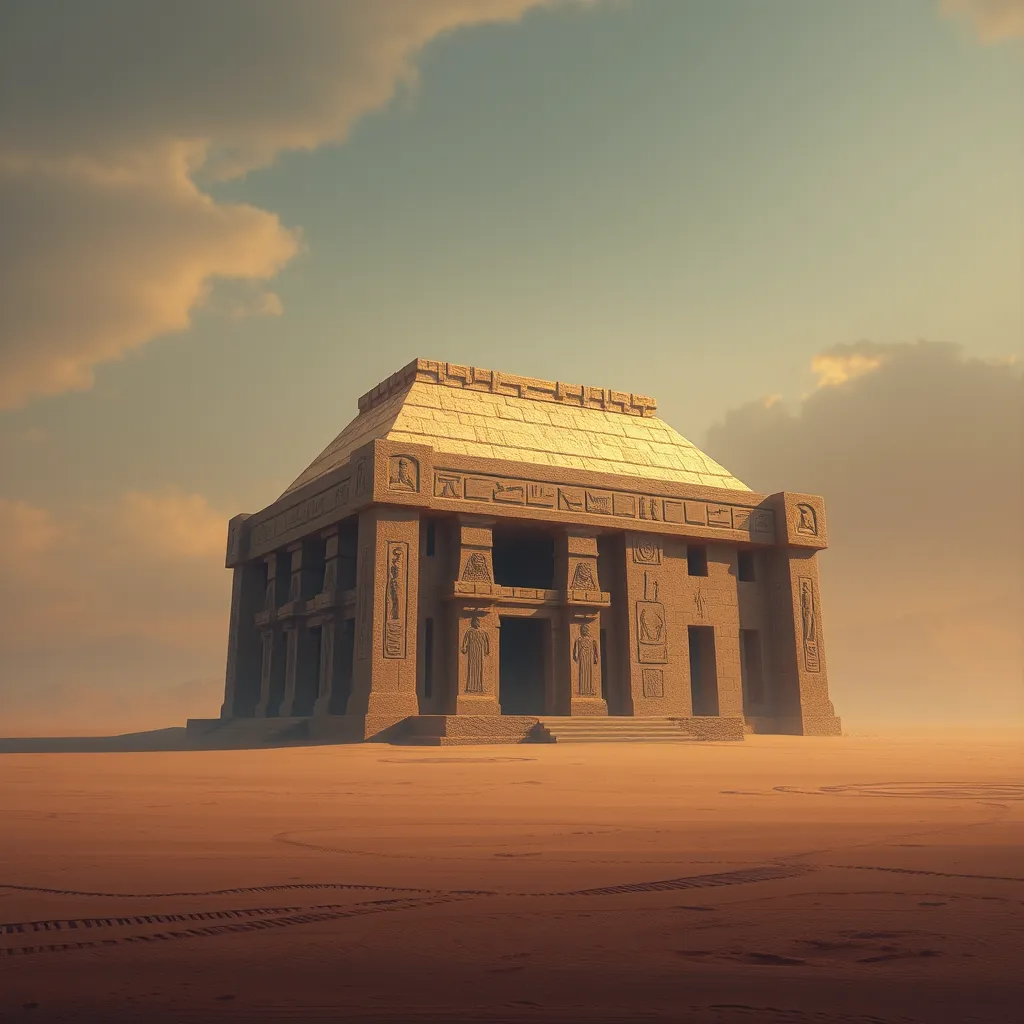The Duat: A Symbol of Hope and Renewal
I. Introduction
The Duat, a concept deeply rooted in Ancient Egyptian mythology, refers to the realm of the afterlife where souls journey after death. It is not merely a place of darkness and despair; rather, it holds profound significance as a transformative space where the cycle of life, death, and renewal unfolds. The Duat represents hope and renewal, symbolizing the eternal journey of the soul and the promise of rebirth.
II. The Mythological Context of the Duat
The origins of the Duat can be traced back to early Egyptian beliefs about the afterlife, where it was envisioned as a complex, multi-layered realm inhabited by gods, spirits, and various mythological creatures. Several key deities are associated with the Duat, including:
- Osiris: The god of the afterlife, resurrection, and fertility, who presides over the dead.
- Anubis: The god associated with mummification and the protection of the dead, often depicted with a jackal’s head.
- Horus: The falcon-headed god who symbolizes kingship and the sky, playing a role in the resurrection of Osiris.
The journey through the Duat is fraught with challenges. Souls must navigate a series of trials, facing various obstacles and adversaries, including monstrous creatures and treacherous waters, before they can reach the judgment hall of Osiris.
III. The Symbolism of Death and Rebirth
In ancient Egyptian thought, the Duat serves as a transitional space between life and the afterlife. It embodies the belief that death is not an end, but rather a passage to a new existence. This cyclical nature of life, death, and rebirth is central to the Duat’s symbolism.
Ancient texts and inscriptions, such as the Book of the Dead, highlight this symbolism by detailing the journey of the soul through the Duat. Passages often include spells and prayers designed to assist the deceased in overcoming the challenges they encounter, ensuring their safe passage to the afterlife and eventual rebirth.
IV. The Duat and the Concept of Judgment
One of the most critical aspects of the Duat is the weighing of the heart ceremony, a pivotal moment in the journey of the soul. In this ceremony, the heart of the deceased is weighed against the feather of Ma’at, the goddess of truth and justice. The implications of this judgment are profound:
- If the heart is lighter than the feather, the soul is deemed worthy and granted passage to the Field of Reeds, a paradise-like afterlife.
- If the heart is heavier, it is devoured by Ammut, a fearsome creature, and the soul faces eternal oblivion.
This concept fosters a sense of moral hope and accountability, encouraging individuals to lead virtuous lives in preparation for their eventual judgment in the Duat.
V. The Duat in Art and Literature
The Duat has been vividly depicted in ancient Egyptian art, with elaborate tomb paintings and carvings illustrating the various aspects of the afterlife journey. These artworks often include scenes of the deceased interacting with deities, facing challenges, and ultimately achieving resurrection.
In literature, references to the Duat abound in mythological texts and religious scriptures, such as the Book of the Dead and the Pyramid Texts. These writings not only provide insight into the beliefs surrounding the afterlife but also serve as a guide for the deceased’s journey.
Modern interpretations of the Duat have appeared in popular culture, from literature to films, where it is often portrayed as a mysterious and perilous realm that embodies the universal themes of death and rebirth.
VI. The Duat as a Reflection of Human Experience
The Duat resonates with contemporary notions of hope and renewal, paralleling personal journeys of grief and transformation. For many, the concept of navigating through a dark and uncertain space before emerging into light reflects the human experience of overcoming challenges and finding new beginnings.
Furthermore, the Duat influences modern spiritual practices, encouraging individuals to seek personal growth through introspection, moral living, and the embrace of change.
VII. Lessons from the Duat for Today’s Society
The symbolism of the Duat remains relevant in addressing modern challenges. In a world often marked by uncertainty and transformation, the lessons of hope and renewal found in the Duat can inspire individuals to embrace change rather than fear it.
Key takeaways include:
- The importance of moral integrity and accountability in personal and societal contexts.
- The value of resilience in the face of adversity, drawing parallels with the soul’s journey through the Duat.
- The potential for rebirth and personal transformation, encouraging individuals to envision new paths forward.
VIII. Conclusion
In summary, the Duat serves as a profound symbol of hope and renewal within Ancient Egyptian mythology. Its intricate narratives and powerful symbolism reflect the universal human experiences of life, death, and rebirth, offering insight into our own journeys.
The enduring legacy of the Duat encourages us to reflect on our paths and the potential for transformation in the face of life’s challenges. As we navigate our own journeys, may we find inspiration in the teachings of the Duat and embrace the hope of renewal.




